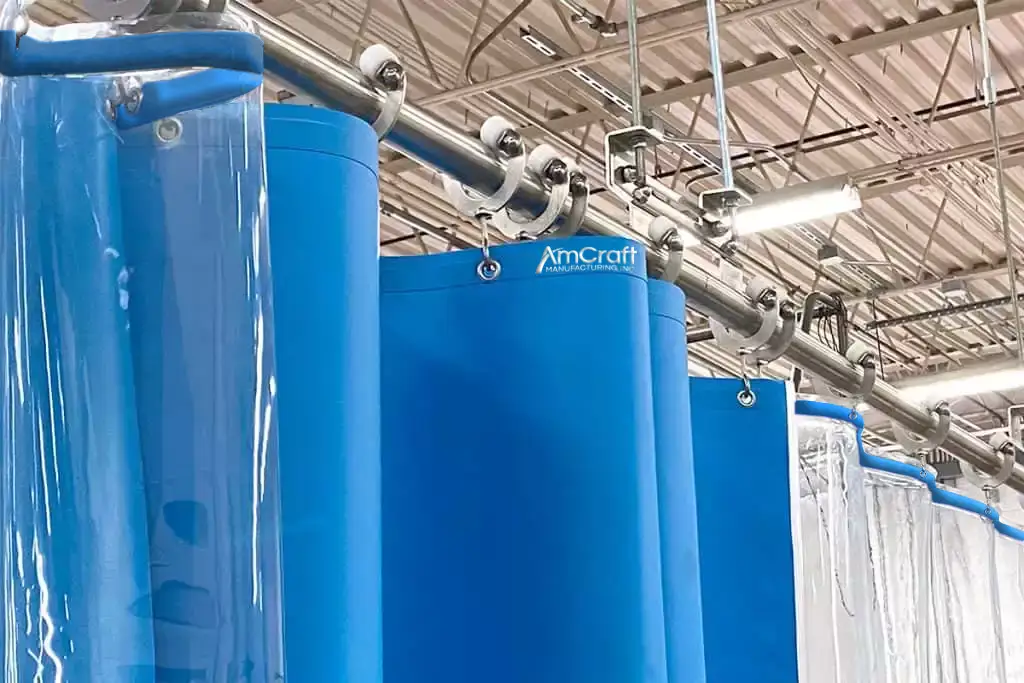The food curtain wall replaces the stitching (found in regular curtains) with a vinyl welding process, which is used on all seams and edges.
This unique welded construction helps adhere to the FDA Food Code 2009 6-101.11 regarding Physical Facilities, Materials and Construction and Repair, Indoor Areas. According to this code, the surface characteristics of construction material for indoor floor, wall and ceiling surfaces under conditions of normal use shall be smooth, durable, and easily cleanable for area where food establishment operations are conducted.”
Number 3 of this same section states that the surfaces must also be “… nonabsorbent for areas subject to moisture such as food preparation areas, walk-in refrigerators, warewashing areas, toilet rooms, mobile food establishment servicing areas, and areas subject to flushing or spray cleaning methods.”
Since the food curtain wall has heat sealed seams, this takes out the “absorbency” factor which is mentioned in this section. The absence of “organic,” fabric threads will prevent such moisture from absorbing, further disallowing contaminants and bacteria to fester and grow.


